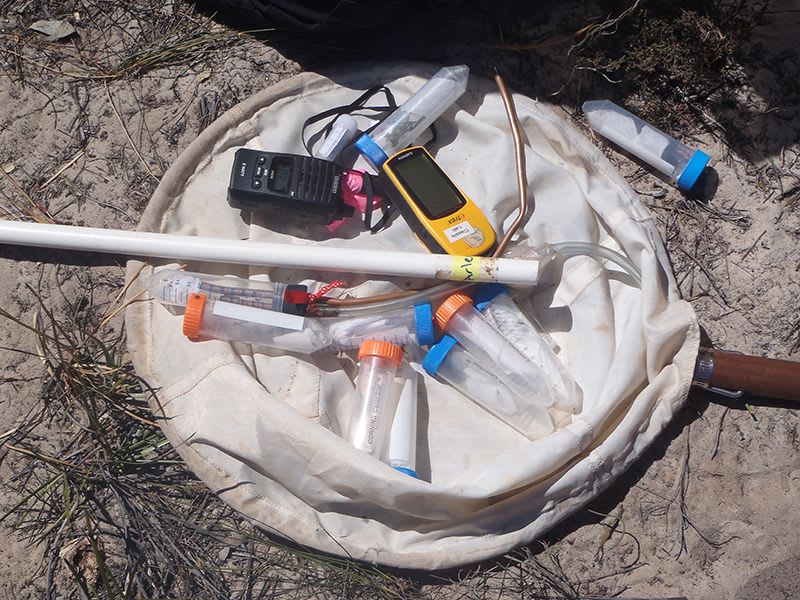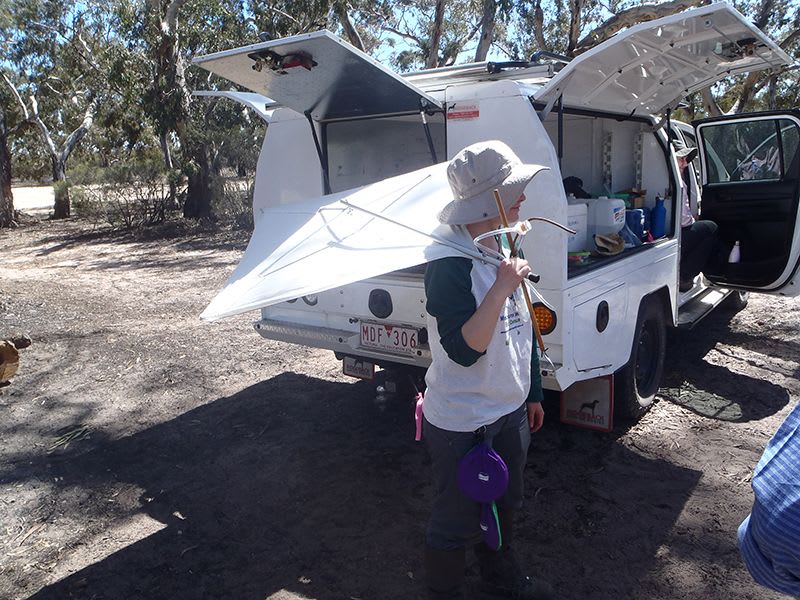Little Desert National Park VIC Bush Blitz | Oct 2018
Today I got to work with the entomologist (insect) team with Simon, Claire and Arlee. Gavin and Laurie from Parks Victoria joined us again too. Looking forward to seeing the team in action with all their gear.
First stop was Urimbirra where we met Ross, one of the co-operative land owners. On the drive across the property we saw a large number of kangaroos. The site was selected and we were briefed by Simon and shown how their different equipment worked. There was a drop sheet and a whacking stick to shake the creatures from the leaves onto the sheet. The net worked in a similar way but wasn't as big. The pooter was really interesting. When something catches your eye, usually by moving, you place the metal tube near the insect and inhale quickly and deeply into the attached rubber tube. The insect gets sucked into the vial. Very cool! There is some very fine mesh to stop the insect being sucked straight through the tube and into your mouth!!
I was armed with a few vials and a keen eye, looking for anything that moved. The day was already warming up so we were also on high alert for any slithering creatures in the bushland. I managed to find a few small things, but they were hard to find and even harder to catch. I had a go with the net and pooter and had a bit more luck. The pooter was certainly much easier to use than the vial alone.

The total haul between us was: jewel beetle, praying mantis, spiders (jumping, crab), gum leaf grass hopper, weevils, bull ants, bugs (including a stink bug) and lots of different types of ants. The experts seemed pleased with the collection so it was off to the next stop, Broughton's Waterhole in the Little Desert National Park.
Now, full of confidence, we set out to find awesome stuff. I managed to collect a European honey bee, native mirids, spiders and some caterpillars. Not bad. Add to the list those found by others (termites, Portuguese millipedes, lace bugs, plant bugs and a native millipede. Pretty good.
Last job before heading back to camp was to collect some leaf litter for analysis back at the lab. We used a Winkler sieve to collect it in a plastic bag.

Simon explained that they put the leaf litter in a Tullgren funnel to collect anything living in the leaf litter. It works like this. The leaf litter is spread on a mesh screen within a large funnel with a light bulb suspended above the litter. The combination of heat, light and the gradual drying of the litter drives insects through the mesh where they drop into a container at the bottom of the funnel.
Another day of working with dedicated, passionate professionals determined to advance understanding, knowledge and science in their chosen field. Thank you for helping me understand the interesting world of insects.